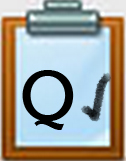Q2 The Main Idea Introduction
Introduction
Effective communication begins with having an idea worth sharing.
In this Quest, you will step through a process designed to help you identify a main idea that is worth sharing with others.
I Can Statements
- select a topic for research
- plan a research strategy
- analyze and evaluate sources
- organize information into categories
- synthesize information into my own idea
Competencies & Standards
MITECS Michigan Integrated Technology Competencies for Students, and
1. Empowered Learner
a. Articulate and set personal learning goals, developing strategies leveraging technology to achieve them, and reflect on the learning process itself to improve learning outcomes
d. Understand the fundamental concepts of technology operations, demonstrate the ability to choose, use and troubleshoot current technologies and are able to transfer their knowledge to explore emerging technologies
2. Digital Citizen
b. Engage in positive, safe, legal and ethical behavior when using technology, including social interactions online or when using networked devices
c. Demonstrate an understanding of and respect for the rights and obligations of using and sharing intellectual property
3. Knowledge Constructor
a. Plan and employ effective research strategies to locate information and other resources for their intellectual or creative pursuits
b. Evaluate the accuracy, perspective, credibility and relevance of information, media, data or other resources
c. Curate information from digital resources using a variety of tools and methods to create collections of artifacts or solving authentic problems
d. Build knowledge by actively exploring real-world issues and problems, developing ideas and theories and pursuing answers and solutions
5. Computational Thinker
c. Break problems into component parts, extract key information, and develop descriptive models to understand complex systems or facilitate problem-solving
6. Creative Communicator
a. Choose the appropriate platforms and tools for meeting the desired objectives of their creation or communication
Websites and Documents
Websites
- Discovery
- Gale in Context: Opposing Viewpoints MeL MI Login required
- Google Arts & Culture
- Nova
- PBS Learning Media for Students
Videos from Outside Sources
21t4s Videos
21t4s Documents & Quizzes




